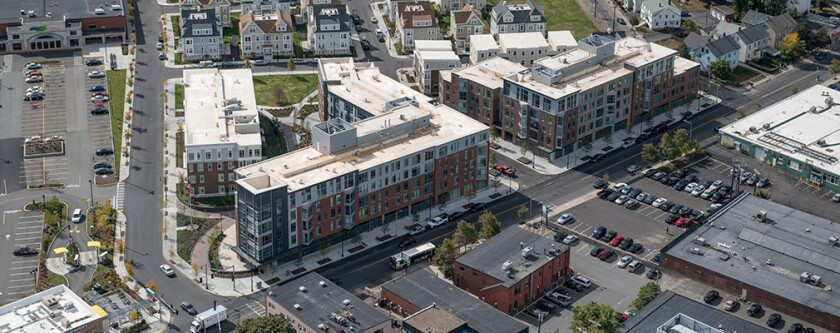The rationale in both cases was that the projects weren’t affordable enough and would cause gentrification. That speaks to a mistaken notion in San Francisco and other restrictive cities, where the insistence on housing that fits some ideal definition of "affordable" becomes the enemy of projects that are still very good.
San Francisco’s opposition has been led by voices like that of Supervisor Dean Preston, who calls arguments to liberalize the city’s zoning code “pure propaganda.” His counterarguments are that more market-rate housing in fact drives prices up. Instead, the self-described Democratic socialist wants variations of what has come to be called “decommodified” development — such as social housing or community land trusts. Other critics are fine with market-rate housing, but want it to have higher affordability set-asides.
But the development that was to go on the department store parking lot included a below-market-rate set-aside of nearly a quarter of the units. And as one article on the proposal’s failure notes, concerns about gentrification are dubious given the area has a 30 percent commercial vacancy rate and is near the Tenderloin, a neighborhood that already concentrates low-income housing. The San Francisco Chronicle’s account of the June 2020 situation describes the hoops Preston wants to put development proposals through, such as "equity studies" that assess the social impact of new housing and can take six months to complete. It bears repeating that both these projects would add hundreds of affordable units onto parking lots that currently have no housing at all.
Such arguments are not limited to San Francisco; they’re a feature of development regulations nationwide, particularly in affluent coastal cities.
In New York City, several large developments have been resisted because they supposedly aren’t affordable enough. Last year, a proposed three-tower project in Lower Manhattan was halted by a judge amid a push by local activists who feared it would gentrify nearby Chinatown. A quarter of the 2,775 units would have been set aside as affordable, including hundreds for people making less than half the area’s median income. The ruling has been appealed, but the delay will weigh on project costs. In Boston, a proposal to redevelop an old racetrack for both office and housing units took three years and hundreds of community meetings to win approval, also a result of arguments about gentrification. The project features a 10,000-unit residential building with a 20 percent set-aside.
These set-aside mandates are generally wrapped in the framework of “inclusionary zoning.” Arguing about how high or low their percentage should be is an ongoing debate. Emily Hamilton, a George Mason University researcher who studied these programs in the Baltimore-Washington region, found that inclusionary zoning at a moderate level didn’t stall development (at least in high-demand markets), although it had a slight upward impact on prices. Other studies have found that when affordability mandates are too stringent, they can discourage development altogether. This seems intuitive, as developers cannot be expected to charge rents far below market rate when all their expenses remain at a market-rate level.
The bottom line is that if cities are to have inclusionary zoning policies, they can’t afford to get carried away in increasing the affordable minimum. Most existing programs require set-asides in the range of 10 to 19 percent of total units for new projects. In California, requirements can reach 44 percent depending on the deal structure.
The expectation of some San Francisco supervisors that projects should exceed even the current California level, or better yet, become 100-percent-affordable social housing, is unrealistic. Accomplishing that would require massive subsidies, and if officials such as Preston expect private developers to do this without much subsidy, not much will be built. Right now San Francisco and other expensive U.S. cities are risking that latter outcome.
This article featured additional reporting from Market Urbanism Report staffer Ethan Finlan.
Governing's opinion columns reflect the views of their authors and not necessarily those of Governing's editors or management.
Related Articles













